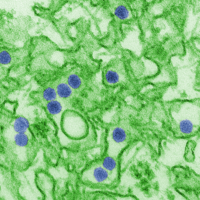
Photo from wikipedia
Several methods exist to collect and assess the abundance of dengue vector mosquitoes, i.e., morning adult collection, pupal collection, ovitraps, human landing, and larval collection. Several of these methods are… Click to show full abstract
Several methods exist to collect and assess the abundance of dengue vector mosquitoes, i.e., morning adult collection, pupal collection, ovitraps, human landing, and larval collection. Several of these methods are officially implemented to monitor mosquito density and make decisions on treatments for dengue control. This monitoring is also constrained by the need to conduct this assessment on a “one point/one day” process, meaning that once the threshold of 100 households is reached, the assessment is made, and the collectors teams move to another place, thus preventing the use of long-term sampling methods. This diversity of methods might be a source of variability and lack of statistical significance. There is also a lack of published data regarding the efficacy of these methods. Furthermore, the Stegomyia indices are shown to be not reliable for assessing the risk of dengue outbreaks. A mosquito survey was, thus, conducted in 39 locations corresponding to 15 dengue endemic provinces in Indonesia by using the different adult and larval collection methods recommended nationwide. A total of 44,675 mosquitoes were collected. The single larva method was the most efficient. Out of a total of 89 dengue-positive pools, the most frequently encountered virus was DENV2, which made up half of the positive samples, followed by DENV3 and DENV1, respectively. Factor analysis of mixed data showed that no correlation could be found between any methods and the presence of dengue virus in mosquitoes. Moreover, no correlation could be found between any methods and the incidence of dengue. There was no consistency in the efficacy of a given method from one site to another. There was no correlation between any of the parameters considered, i.e., method, incidence of dengue, location, and the presence of dengue virus in mosquitoes.
Journal Title: Frontiers in Medicine
Year Published: 2021
Link to full text (if available)
Share on Social Media: Sign Up to like & get
recommendations!